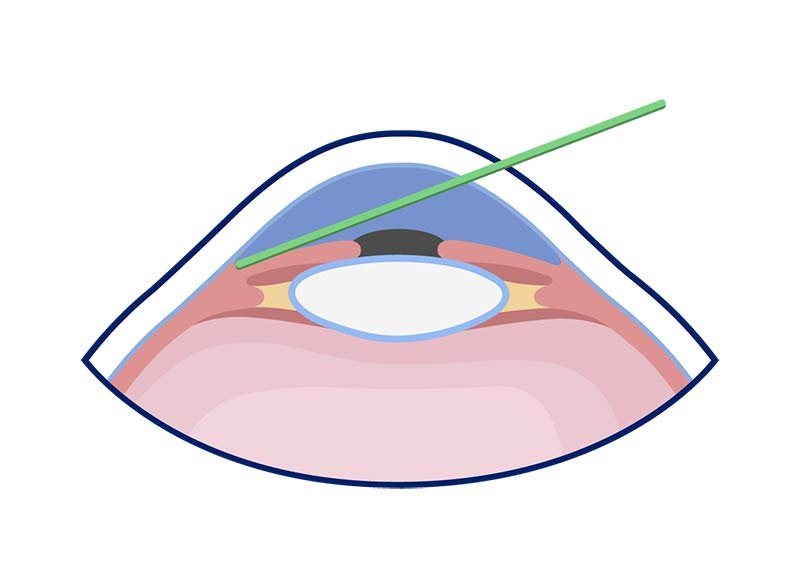Selective Laser Trabeculoplasty (SLT)
What is SLT?
Selective Laser Trabeculoplasty is a typically painless, gentle, clinic-based procedure performed in under 2 minutes for patients with glaucoma or ocular hypertension.
Robust scientific evidence has demonstrated that patients who have SLT have better eye pressure control, are more likely to not require drops or have fewer drops, have less deterioration in their peripheral vision and are less likely to need glaucoma surgery.
How does SLT work?
Targeted laser therapy is delivered to the drainage site of the eye, known as the Trabecular Meshwork. The laser device from a patient’s perspective is almost identical to the slit lamp that you will have had your eye examined on including a chin-rest and sitting comfortably forward. This laser is non-destructive and stimulates this tissue to undergo a reformation to allow greater egress of fluid from the eye into the drainage channels.
How long does it take to work?
Effects can occur in weeks but usually 6-8 weeks after treatment is when the drainage pathways will have remodelled.
What if I blink?
Anaesthetic eye drops are applied and a small lens is placed on the eye - this does not cause any pain and is easily accommodated within a few seconds. That way, you may blink away with your fellow eye as normal but the eye receiving treatment won’t feel the need to blink and will be gently held open.
SLT: advantages
Reduces eye pressure substantially relative to most drops
May avoid taking drops
Great choice for drop allergic patients
24 hour eye pressure reduction
Rapid recovery
Is SLT the right treatment for me?
SLT is typically a good choice for patients who have open angle glaucoma or ocular hypertension starting therapy for the first time. It is also a good choice for those who suffer with medication forgetfulness, irritation or if the medications are ineffective. Mr Agrawal will carefully assess your suitability for SLT. Provided your glaucoma is “open angle”, most patients are eligible.
What are the results?
A major UK based clinical study called the LIGHT trial, demonstrated that 75% of eyes that underwent SLT were drop-free at 3 years. SLT may require re-treatment if the original treatment has worn off or was ineffective the first time around.
What’s the downside of SLT?
SLT is a very safe and gentle procedure. A full discussion about disadvantages of SLT will be provided by Mr Agrawal and applied to your specific ocular condition and requirements. Most patients worry about vision changes or damage to the eye when “laser” is mentioned and this is understandable. SLT is extraordinarily safe and it is extremely rare to have vision problems such as corneal or macula swelling. If these do occur, they usually resolve promptly and on their own without treatment.
Some types of glaucoma are contraindicated to be treated with SLT e.g. angle-closure glaucoma. Re-treatment may be required with SLT. Typically re-treatment is required in 2-3 years but this can vary. A minority of patients may not respond to treatment from the outset (5-15%) and the scientific literature is looking into how we may better predict who these patients will be. In a small group of patient’s the eye pressure can go up after treatment, but often settles with extra eye drops. Alternatives to SLT include taking drops and surgical procedures.
What’s the recovery like?
Patients typically take a few minutes to recover and there is no restrictions on what you can and can’t do. Most patients will be able to return to work immediately but Mr Agrawal can guide you on your personal situation. Your pressure will be recorded after your procedure and you will be asked to take some drops over the coming days.
For further information on this surgery please click on this patient information sheet.

